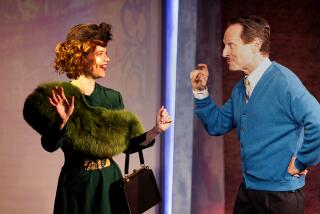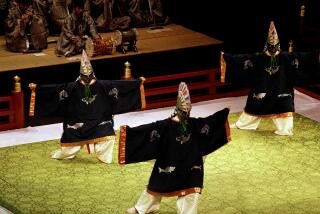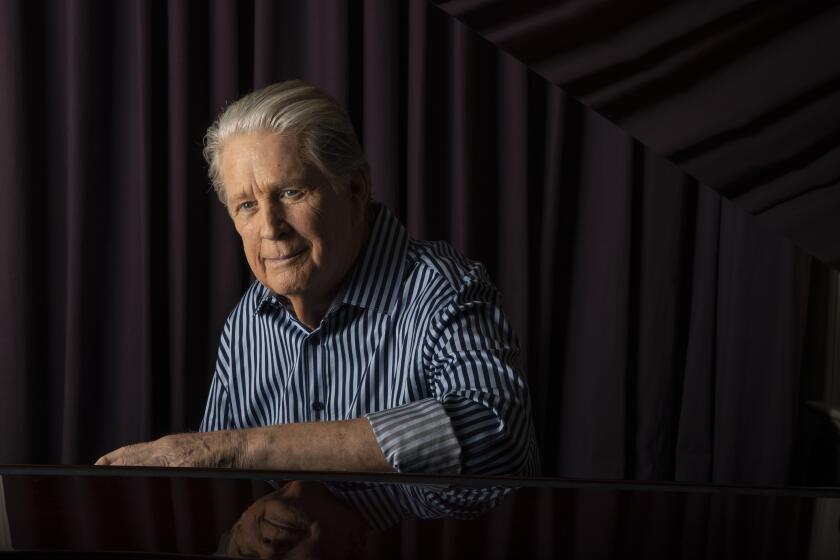From Here to Utopia : Looking back at the magic of the New York World’s Fair of 1939 : 1939: THE LOST WORLD OF THE FAIR, <i> By David Gelernter (The Free Press: $23; 375 pp.)</i>
- Share via
If paradox had a sense of symmetry, this book would have been published in 1981. That would have been exactly 21 years after 1960--which was 21 years after the New York World’s Fair of 1939, for which 1960 was the focal point in the Fair’s vision of the future. Thus David Gelernter’s book would be staring back at, and through, the prism of 1960 from the same exact distance in time that the World’s Fair stared ahead to it.
“1939: The Lost World of the Fair” is about nothing if not paradoxes, the first of which is that those of us far beyond 1960, which represented to the America of 1939 such a magical future, look back on it and see the same magic--and wonder where it went.
The New York World’s Fair was the greatest of all world’s fairs, in the greatest of all cities. Gelernter points out that by the late 1930s New York City was, at 7.5 million people and counting, the largest state in the country--but for the mere technicality that it wasn’t a state. For those who attended (over and over again, up to 20 or 30 times), the fair wasn’t a mere attraction but an event, where lives were not merely diverted but turned.
One passed through its looking glass irrevocably transformed by the fair’s confident promise of a fabulous tomorrow, made by and to an America that ought to have been skeptical of promises, mired as it was in the Depression and beset as it was by a world roiling with lunatics and their armies. Conspiring in this promise were all the fair’s most dazzling exhibitions: the Futurama and the Road of Tomorrow, the Trylon and the Perisphere, Democracity and Rainbow Avenue. More often than not, they lived up to their names.
These attractions presented to the world in general but America in particular a wide-screen utopia we now find impossible to believe. We find it impossible to believe, Gelernter suggests, not because we’re more sophisticated or cynical, but because we’re soul-sick, dismayed to the pit of our collective experience by actually having achieved utopia in the 1960s as scheduled, and then seen it destroyed.
We’re dismayed to wonder whether this destruction was wreaked by some perversity on our part, or by the perverse nature of utopia to undo itself; and we’re dismayed most of all that we ever had such faith in the first place. This book wonders, perhaps with the rest of us, at a bygone America that could still have hope for the future when the present gave so little reason for hope, as opposed to our America that, with so many of its dreams having come true, can only seem to despair.
The Fair of 1939 was something like a biblical moment in what Gelernter calls the American religion, which was a faith not only in American destiny but its holy union with God’s ultimate designs; through the prism of the fair’s future and our past can now be seen the Garden both before and after the fall. “It turns out, the author writes, “that, unfortunately, utopia is a costly thing to achieve--not materially but spiritually . . . because a religion that has seen its promises realized is bound to crack apart. It has served its purpose. And today the American religion--in the passionate intensity of its heyday--is dead, a mere memory. America exists today in a post-utopian twilight.”
“1939” is an almanac of the prism’s refractions. Gelernter examines each shard of light for what it reveals: the dress of the time, the music, the technology and etiquette and morals, the speculations and gestures of Titanic men from Franklin Roosevelt to Fiorello La Guardia to Robert Moses on down. At times the author examines them at rather too much length, with the occasional untidiness--a repeated sentence, a redundant idea--that so easily slips by whatever passes for editing in the New York publishing business these days; and because its most provocative notions have all been introduced in the first 50 pages, the book is occasionally prone to tedium.
Its most impressive conceit is also its most problematic: interwoven throughout the author’s observations, and told through interviews and diary entries, is the story of a young couple who courted at the fair and then went on to live out their relationship against the backdrop of the fair’s aftermath, which of course was war and holocaust. Gelernter’s intentions, not only to give the fair a human face but his story the dimensions of an epic, are admirable for their audacity; and at first it’s difficult to understand why the book always seems to stall in these sections, why the sections seem tone-deaf, until one returns to the beginning and notes the disclaimer: that in fact these characters are not real. I didn’t realize this until I was about a quarter of the way through, at which point I didn’t begrudge the fiction but the time I had spent with people whose voices never rang true, when I would rather have been taking one more ride on the Futurama.
Gelernter is a lot more effective when he’s conveying the fair’s wonder. Even now it still seems wonderful, in large part because our imaginations seem so stunted or literal in comparison, the fair having become displaced by Disney Worlds and Magic Mountains and Universal Studios that are more about what technology can recreate than about our dreams. At the same time, I can’t help but find a little dubious the nostalgia the Fair and its era evoke, not only for the author but for myself.
“The ambitions of women,” Gelernter quotes a disapproving commentator of the time, “the disintegration of the home, the liberalizing of education, the respectability of divorce, the unrestrained dreams of youth, the decline of the church, are all facts not accounted for in our inherited culture.” Leave aside for the moment whatever you think about divorce or the ambitions of women; the most telling part of this litany of social decay is the business about “the unrestrained dreams of youth.” God forbid, in the America of the 1930s, that youth should dream without restraint, outside the boundaries of what the culture could account for, let alone approve of.
It may be that the dreams that most profoundly stirred us, the ones we really believed in but couldn’t admit to ourselves, weren’t the grand ones. At the 1939 Fair, there was a section called the “Amusement Area.” It was the other side of the fair’s tracks, with girlie shows and topless dancers and a surreal-erotic concession by Salvador Dali called the Dream of Venus. Though Gelernter doesn’t identify it as such--guiding us through the Amusements just long enough to point out, like a parent to a child, what there is to beware of in life--this was America’s secret future: these dreams were tawdry, but maybe a little more human; slightly slipshod, but perhaps not as antiseptic. For this secret future the focal year was not a glittering, utopian 1960 but, say, a turbulent, psychedelic 1967. If paradox has any symmetry, that would make the publication of this book, in 1995, right on time.
More to Read
The biggest entertainment stories
Get our big stories about Hollywood, film, television, music, arts, culture and more right in your inbox as soon as they publish.
You may occasionally receive promotional content from the Los Angeles Times.










